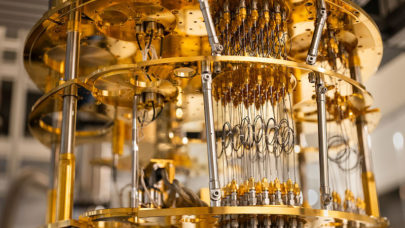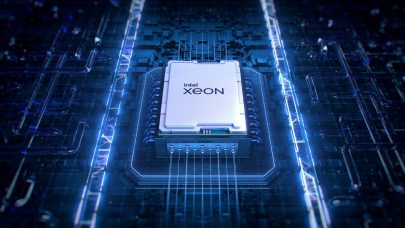The Weekly Top Five features the five biggest HPC stories of the week, condensed for your reading pleasure. This week, we cover Cray’s first XMT-2 supercomputer order, University of Delaware researchers’ extreme-scale architecture breakthrough, AMD’s OpenCL University Kit, Platform’s Grid Engine migration program, and PGI’s 2011 product refresh.
CSCS First to Order Cray XMT-2 Supercomputer
Cray has received its first order for a supercomputer based on its next-generation XMT architecture. The contract was awarded by the Swiss National Supercomputing Centre (CSCS) in Manno, Switzerland, and the announcement was made to coincide with a CSCS-hosted workshop focused on large-scale data analysis. Fitting since that’s exactly the kind of workload CSCS has planned for the system.
CSCS is no stranger to Cray systems. The organization was the recipient of the first-ever Cray XE6 system and is also home to a Cray XT5 supercompter, referred to as “Rosa.” The upcoming addition, expected to arrive later this year, will be part of a new project at CSCS called EUREKA, which matches Swiss scientists with dedicated resources for large-scale data analysis services. According to the release, “the proposed facility will be used for large-scale analysis of unstructured data and data mining, and is designed for parallel applications that are dynamically changing, require random access to shared memory and typically do not run well on conventional systems.”
The Cray XMT supercomputer features a massive, multithreaded architecture to support “data-driven problems that exist in unrelated and diverse data sets.” Each processor can handle up to 128 concurrent threads and the system can scale from 16 processors up to multiple thousands of processors.
University of Delaware Researchers Hope to Redesign Supercomputer
Guang Gao and a team of researchers at the University of Delaware are working to achieve breakthroughs in supercomputing that they hope will lead to a new generation of systems. The group is focused on improving the speed, efficiency and computational capacity of extreme-scale systems.
Gao, a distinguished professor of Electrical and Computer Engineering, is an expert in computer architecture and parallel systems. He and his team are taking part in a research and development initiative put forth by the Defense Advanced Research Projects Agency (DARPA) “to create an innovative, revolutionary new generation of computing systems” under DARPA’s recently-announced Ubiquitous High Performance Computing (UHPC) program. The University of Delaware researchers are members of the Intel Corporation UHPC team, which is focused on creating the next-generation of hardware and software technologies for extreme-scale computing systems. Other members of the Intel team are based at the University of Illinois at Urbana Champaign, the University of California at San Diego, Reservoir Labs Inc. and E.T. International, Inc. (ETI).
Gao comments on the significance of the undertaking: “This is a very important event for the nation. This project will develop a supercomputer that puts the United States ahead of our competitors. But with that comes a lot of responsibility.”
The project participants understand the need to develop a different kind of architecture, to enable a true breakthrough in parallelism instead of just stringing more and more cores together. To that end, the announcement states that UHPC program recognizes that “a new model of computation or an execution model must be developed that enables the programmer to perceive the system as a unified and naturally parallel computer system, not as a collection of microprocessors and an interconnection network.”
Such a redesign is paramount to our nation’s economic and military competitiveness. DARPA, a department of defense group, understands that very well. It is thought that this “radically new” architecture will allow applications to perform 100 to 1,000 times better than current models. Another goal is to enable parallel software design, to make it less difficult.
Prototypes of these UHPC systems are scheduled to be ready by 2018.
AMD Launches OpenCL University Kit
This week AMD introduced the OpenCL University Kit to assist universities in teaching a semester course in OpenCL programming. OpenCL (Open Computing Language) is an open standard for parallel programming of heterogeneous platforms including GPUs, multicore CPUs and other processors.
From the announcement:
This effort underscores AMD’s commitment to the educational community, which currently includes a number of strategic research initiatives, to enable the next generation of software developers and programmers with the knowledge needed to lead the era of heterogeneous computing. OpenCL, the only non-proprietary industry standard available today for true heterogeneous computing, helps developers to harness the full compute power of both the CPU and GPU to create innovative applications for vivid computing experiences.
The University Kit includes a 13 lecture series complete with instructor and speaker notes, and code examples. Course participants need not already be proficient in OpenCL programming, however basic knowledge of C/C++ programming is recommended. Students will need a C/C++ compiler and an OpenCL implementation, such as the AMD APP SDK, to complete the exercises. For additional information, including a listing of educational institutions now offering courses in OpenCL programming, click here.
AMD also announced that it will be holding its first AMD Fusion Developer Summit from June 13-16 in Seattle, Washington.
Platform Offers Migration Path for Grid Engine Users
Platform Computing has released a migration program for Grid Engine users aimed at easing the transition to one of Platform’s workload management systems, either Platform HPC, an HPC cluster solution, or Platform LSF, a comprehensive HPC workload management platform.
Presumably, Platform developed the migration tool in response to Oracle’s December announcement that it was discontinuing support for the open source version of Grid Engine and was also shutting down the CollabNet site (gridengine.sunsource.net), and the subsequent exodus of Grid Engine’s expertise to Univa. Those affected by the news had to decide whether to take their chances with the open source version, purchase Univa’s commercial Grid Engine offering, utilize one of the Grid Engine forks, or migrate to another workload manager altogether.
Platform officials state that while there are multiple Grid Engine paths, there is only one Platform LSF, and it has retained backwards compatibility for over 18 years. They describe their solutions as offering easy-to-use management capabilities, such as cluster provisioning, workload management, automated workflow, and monitoring and analysis, accessible through a unified Web interface. Platform LSF and Platform HPC also include application integration templates for ISV applications.
Chris Collins, head of Research Computing Services, University of East Anglia, commented on the university’s experience with the migration tool:
We are very pleased with the results of our decision to partner with Viglen to migrate to Platform Computing. The robust capabilities in Platform HPC will enable us to lower power consumption and increase collaboration between different departments in the University. The Windows/Linux dual boot functionality will help make HPC more accessible to other researchers, who are not traditionally HPC/Linux users. In addition, the easy-to-use interface will make it simpler to capture metrics such as resource usage per user, helping ensure that we are achieving optimal resource utilization as well as facilitating accurate billing for system resource usage.
PGI Updates Compilers, Development Tools
The Portland Group (PGI) has released PGI 2011, its latest line of high-performance parallelizing compilers and development tools for Linux, Mac OS X and Windows. This is the first general release to provide full support for the PGI Accelerator programming model 1.2 specification on x64 processor-based systems incorporating NVIDIA CUDA GPUs. The new PGI release offers several other enhancements for multicore x64 processor-based HPC systems.
The latest Intel and AMD microprocessors will be supported, as outlined in the following text:
New features and enhancements include support for the new Advanced Vector Extensions to the x64 instruction set architecture (AVX) in upcoming Intel Sandy Bridge and AMD Bulldozer CPUs, support for the Fortran 2003 language standard, enhancements in C++ performance through default fast exception handling and improved Boost C++ libraries support, OpenMP nested parallelism, new memory-hierarchy optimizations, debugger improvements including compact parallel register displays and tab-based sub-windows, and performance profiler enhancements to simplify browsing of multi-core profiles. The 2011 release also supports GPU performance profiling and benefits from revamped packaging for faster download and installation.
PGI has been working with NVIDIA on integrating CUDA support into their tools. Sanford Russell, director of CUDA marketing at NVIDIA, comments on the partnership:
The continuing evolution of the PGI compilers to support the CUDA parallel architecture ensures that applications developed by more than 100,000 CUDA developers worldwide can be portable to all types of HPC systems. This trend will clearly continue with the upcoming release of the CUDA-x86 compiler, enabling developers to compile and optimize their CUDA applications to run on x86-based systems.
Planned updates for the PGI 2011 software due out this year will include a PGI CUDA C/C++ compiler that allows developers to port CUDA programs to any multicore x64 processor-based system with or without NVIDIA GPU accelerators.




























































